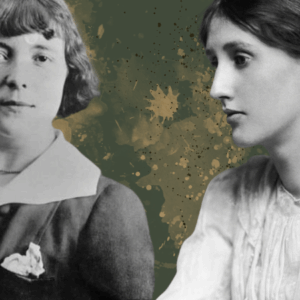
Beyond One-Note Nastiness: On Getting Inside the Head of a Despicable Character
Shannon Bowring Shares Her Experience With Writing From an Antagonist’s Point of View
I have always been fascinated by the question of whether our lives are determined by fate or by choice. In the final installment of The Dalton Novels, a trilogy about a small town in Maine, my characters grapple with the same idea. For some, the answer lies somewhere in the middle, with cosmic destiny and personal decision being both interchangeable and inseparable. For other characters, namely Tommy Merchant, there is a clear winner in this age-old debate, along with a lifetime of proof that it is fate, not choice, which has turned the world against him.
When I wrote about Tommy in my first novel, The Road to Dalton, he quickly took on stock character status as an abuser, a petty criminal, an all-around Bad Dude. Readers’ introductions to him are given through some of the most respected residents of Dalton, Maine, which only makes it more obvious that he isn’t who we should root for in this town. Other than a couple moments of tenderness between Tommy and his fiancée, there are no scenes in the first book that challenge our negative perception of Tommy.
I still felt that I had failed Tommy, that I had once again turned him into a plot device rather than a multi-dimensional character worthy of consideration or empathy.
Part of this approach to revealing Tommy’s abhorrent character was the result of my being a novice writer desperate to sell my first book, bowing to pressure to inject more drama into my “quiet” literary novel. I was also trying to lean into the tradition of protagonist versus antagonist: the outdated tenet that for every good main character, there has to be a not-so-good one to balance them out. This aspect of fictional storytelling has never felt right to me, or at least not completely right. But I was relatively new to the literary scene, and I took the easy way out, making Tommy not only a definitive antagonist, but the same one-dimensional bully we have seen a thousand times before.
Around the midpoint of the first novel, after losing in a fight to one of Dalton’s good guys, Tommy flees town, remaining a shadowy half-presence for the rest of the book. This was meant to emphasize his cowardice, but it ended up feeling more like a cop-out, and I recognized it as unrealistic.
The more distance I had from the first novel, the more I wished I had found a truer way to deal with Tommy’s part of the story. In the sequel, Where the Forest Meets the River, I tried to rectify some of my mistakes. I wrote more about Tommy’s background, his alcoholic parents, and the abuse he endured. But despite my attempts to humanize Tommy in Forest, he remains the antagonist, a phantom bully on the telephone lurking in the shadows until he emerges at the end of the book to ostensibly rob all joy from his fiancée’s life. It was a good cliffhanger of an ending, and I don’t regret bringing him back to Dalton—he was always meant to return. But even after the second book was finished, I still felt that I had failed Tommy, that I had once again turned him into a plot device rather than a multi-dimensional character worthy of consideration or empathy.
In the series finale, In a Distant Valley, I wanted to prove that I had grown as a writer since the first novel. I often speak about Tommy at author events, mentioning how readers should bear in mind that abuse and trauma are systemic in a town like Dalton. I offer this up not to excuse his behavior, but to remind people that considering a character’s past is essential to understanding the man he eventually becomes. In the third book, I wanted to finally show Tommy’s past, ugly as it was. I decided the only way to do this was to write in his own voice. And if I was going to be successful, I would need to get into the mind of a man who hates women.
*
For inspiration on how Tommy might think and speak, I looked to some unconventional sources, such as films like Grease and shows like The Sopranos, milieus where the slander and degradation of women comes naturally (actually, pretty much anything produced before the late-2010s fit the bill). I borrowed phrases and attitudes from online trolls and convicted felons. And I thought about the first boy who called me a bitch: One year older and a foot taller than me, this boy had a sonar-like ability to find me on my way out the doors of our small town’s combined middle/high school and follow me on my short walk home. I don’t recall the specific incident that triggered him into calling me a bitch, but I do remember the tone of his voice when he said the word, the strangeness of how he managed to sound both enraged and delighted to reveal to me exactly what I was. Though several other men have called me that same word, and worse, throughout my lifetime, this particular bully surfaced often as I channeled Tommy and wrote from his perspective.
Like me, Tommy would have looked to the culture around him to learn the language of demeaning women. Unlike me, he would have had to look no further than his own family, a long line of men and women who have suffered generations of domestic violence, poverty, addiction and alcoholism, and mental illness. From childhood, this history was offered to Tommy by his father as proof that the men in their family were cursed and that everyone else in Dalton was out to get them. Tommy also grows up being abused by his father and regularly witnessing his father hit his mother. And when I consider Tommy as a child in this highly dysfunctional environment, I see him as something more than a stock character. He is now a victim, a hurt little boy I want to pick up off the dirty floor and keep safe from the world.
As challenging as it was to work from Tommy’s perspective, I am grateful to him.
Which begs the question: What might he have become if someone early on had treated him with kindness? As Tommy’s father would say: “You turn into what people say you are.”
*
As I wrote Valley, my compulsion to protect Tommy began to dissolve as he grew from a helpless kid into a man who repeatedly hurt others. Though I have no tolerance for his behavior, retaining some the empathy I had felt for him as a child was essential. Had I written his scenes with no sympathy for or consideration of who and what he came from, I would have ended up repeating the same mistakes from the first two novels: Creating an uninteresting caricature of a villain, rather than a wounded, complex human.
As challenging as it was to work from Tommy’s perspective, I am grateful to him. By writing in his voice, I was able to explore the ideas around nature versus nurture and to weave the concept through other storylines in Valley. It was compelling to see how my other characters’ interpretations of fate and choice compare to Tommy’s, and the juxtaposition of his lack of personal agency helps to emphasize the evolution these other characters experience.
In what might be considered ironic, by always thinking of himself as the victim of an unfair universe, Tommy Merchant may well make himself a one-note character. That is his choice. But by delving into the world that raised him, and by doing the unpleasant work of placing myself in the minds of violent men like him, I found a way to make Tommy something different. Not something better, perhaps. Just something more.
__________________________________

In a Distant Valley by Shannon Bowring is available from Europa Editions.
Shannon Bowring
Shannon Bowring has been nominated for a Pushcart and a Best of the Net, and was recently selected in Best Small Fictions. She holds an MFA from University of Southern Maine Stonecoast and currently resides in Maine. The Road to Dalton is her first novel.



















